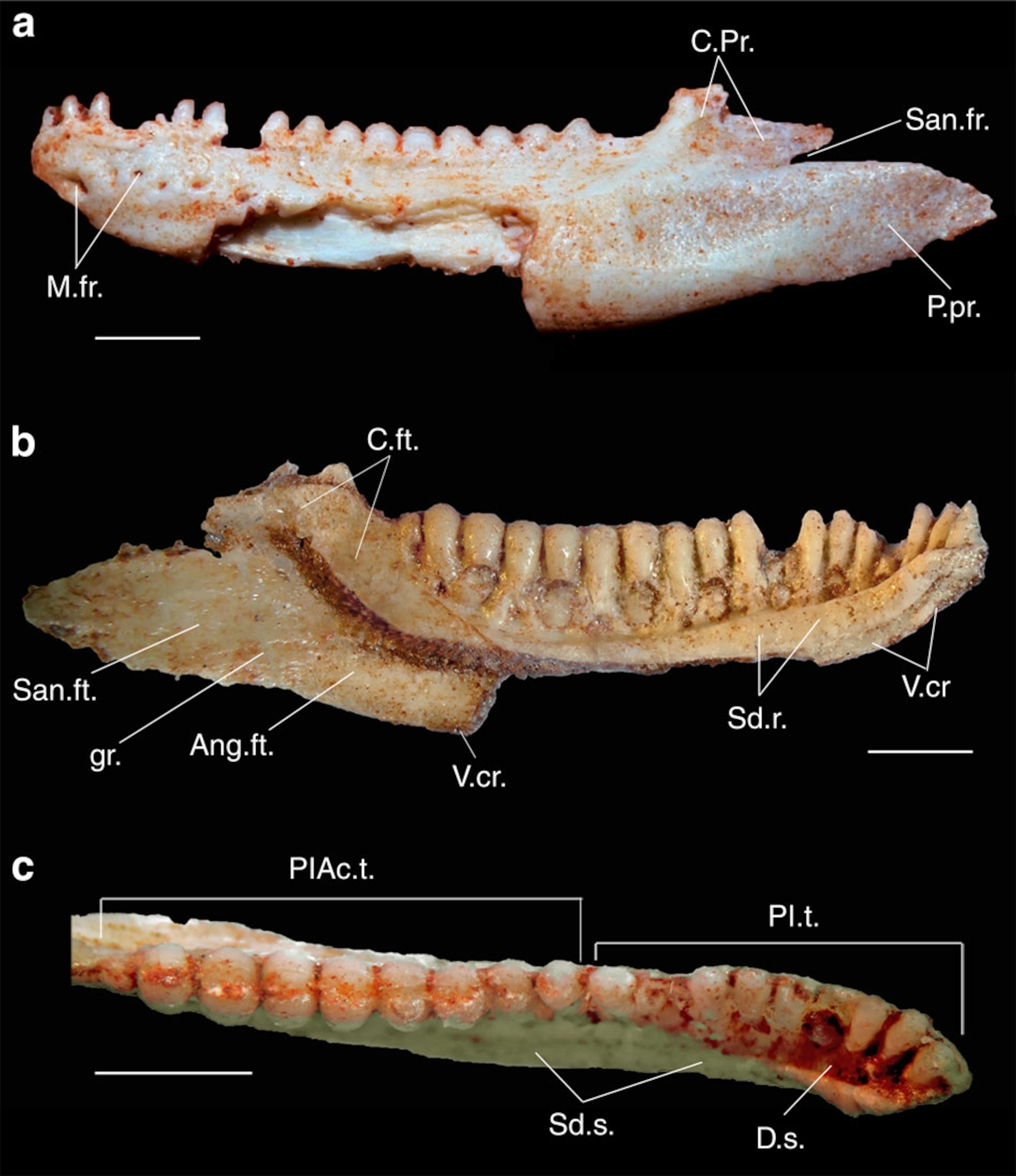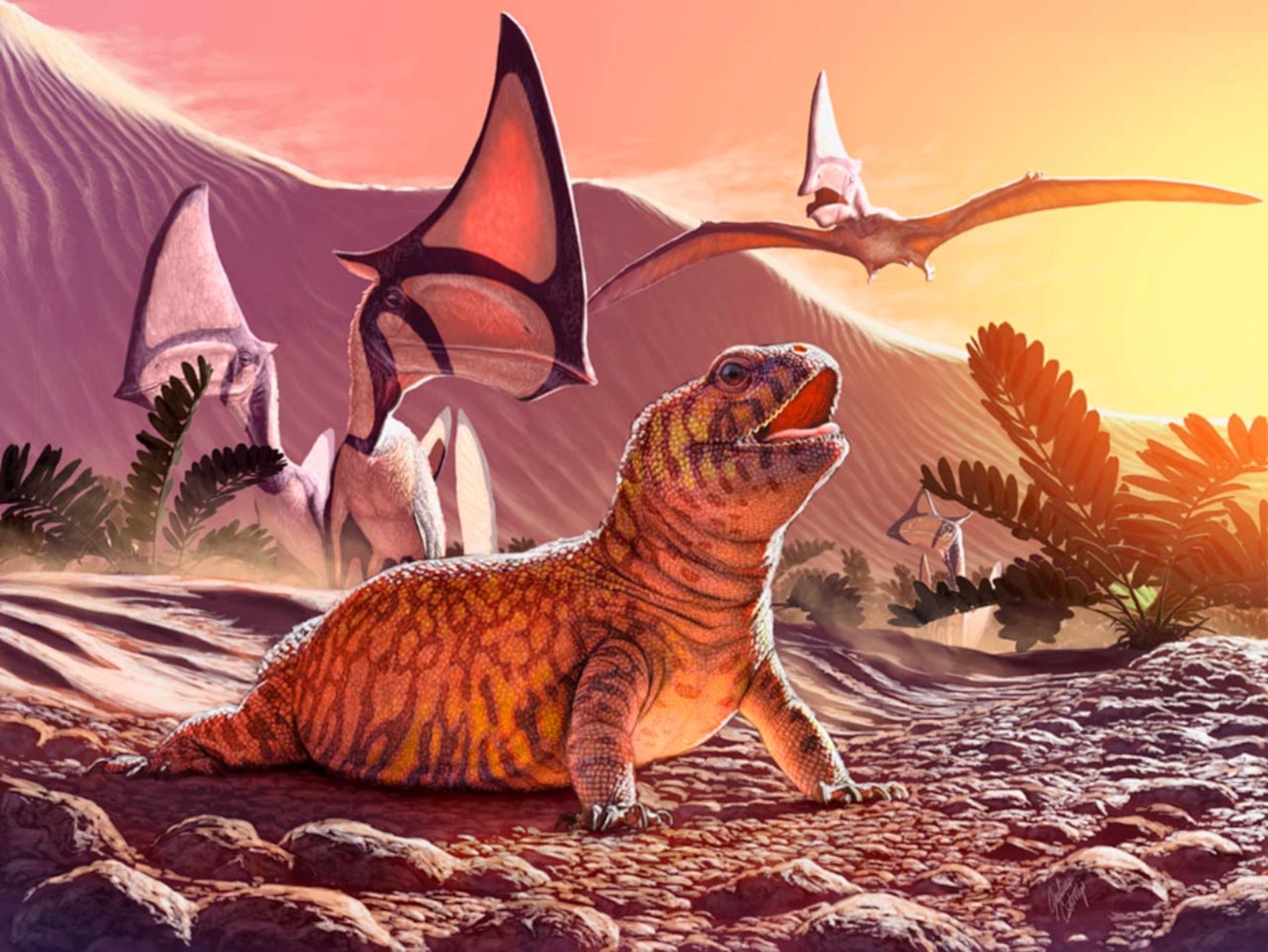Name: Gueragama sulamericana
Meaning: “The ancient agama from South America”.
Age: About 80 million years old.
Where in the world?: The Goio-Erê Formation of Brazil.
What sort of critter?: An acrodontan lizard related to today’s agamas.
Size: Not estimated.
How much of the creature’s body is known?: A lower jaw as well as possible parts of the upper jaw and teeth.

Claim to fame: “Nothing in biology makes sense except in the light of evolution”, the biologist Theodosius Dobzhansky famously wrote, and – to bastardize that oft-repeated quote for this post’s sake – nothing in biogeography makes sense except in the light of the fossil record.
The distribution of different groups of organisms over the planet is rife with puzzles and contradictions. One of these longstanding head-scratchers concerns the major group of lizards called iguanians. There’s a major split among these reptiles. Forms with teeth fused at the top of their jaws – called acrodonts – are scattered throughout the Old World, but their closest relatives dominate the Americas, Madagascar, and a smattering of Pacific Islands. If lizards such anoles and agamas are close relatives, in other words, why are they so far away from each other?
Gueragama sulamericana, a fossil lizard described by Tiago Simões and colleagues, has begun to offer an answer. This 80 million year old lizard scurried through the deserts of prehistoric Brazil, yet it belonged to the acrodont lineage found only in the Old World today. It’s the first of its kind found in the Americas, and, Simões and coauthors write, the critter brings up a new scenario for the spread of iguanian lizards seen today.
Tens of millions of years before Gueragama, while the continents were still knit together to make the supercontinent Pangaea, the acrodont and non-acrodont lizards diverged from their common ancestor. The tall-toothed ones – the ancestors of Gueragama – spread all over the world. But, as the continents became isolated, the acrodonts began to be replaced by their close relatives in the Americas. Why this happened is a mystery. The mass extinction at the end of the Cretaceous could have wiped out the kin of Gueragama, Simões and coauthors speculate, or maybe the non-acrodonts out-competed their relatives. Now that paleontologists know that Old World lizards once had a toe hold in the New, though, fossil hunters will know to keep an eye out for the reptiles in places they were never expected to be.
Reference:
Simões, T., Wilner, E., Caldwell, M., Weinschütz, L., Kellner, A. 2015. A stem acrodontan lizard in the Cretaceous of Brazil revises early lizard evolution in Gondwana. Nature Communications. doi: 10.1038/ncomms9149
Previous Paleo Profiles:
Atychodracon megacephalus
Sefapanosaurus zastronensis
Huanansaurus ganzhouensis
Zhenyuanlong suni
Lepidus praecisio
Nothronychus graffami
Ganguroo robustiter
Vulpes mathisoni
Ichibengops munyamadziensis
Pulanesaura eocollum
“Lightning Claw”

